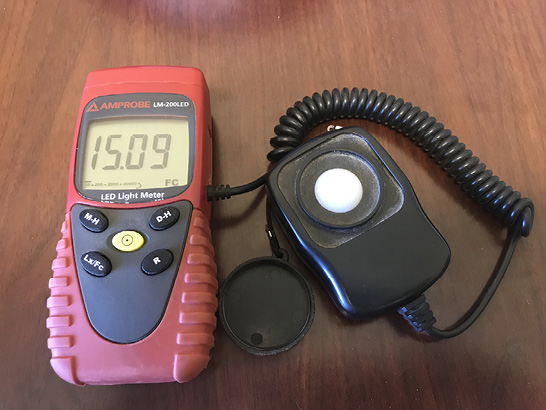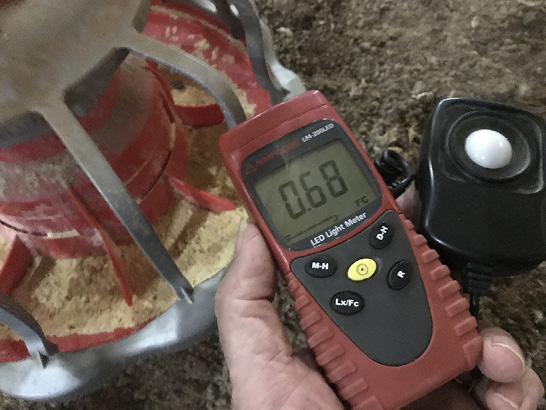Broiler House Lamp and Light Dimmer Basics
Issues with LED lamps and light dimmers in poultry houses continue to plague the poultry industry. It’s time to get past the finger-pointing stage and solve the problem. And the problem can be solved. However, everyone from both the lamp and dimmer sides needs to work together to educate integrators, distributors, and growers on what combinations will and will not work in a poultry house situation. A variety of different light dimmers and a multitude of different LED lamps are used in poultry houses today.
Unfortunately, the fact is that many of these various combinations in use today were never meant to be combined in the first place. Some combinations of lights and dimmers work well together. However, many combinations are not working and are leading to premature lamp failures, flickering, ghosting, dead travel, etc., resulting in unhappy growers and integrators. The main point of emphasis that integrators, growers, and distributors must understand is that we can spend good money once, address the issue, and move on to something else, or continue to spend bad money over and over again and still not solve the problem.
Some Facts
First of all, incandescent lamps are nothing like LED lamps. Leading-edge light dimmers are nothing like trailing-edge light dimmers. The two dimmer styles and the two lamp styles are so different that they are practically total opposites. Incandescent lamps and leading-edge light dimmers work well together. LED lamps and trailing-edge light dimmers work well together. However, leading-edge light dimmers and LED lamps are NOT compatible and do NOT work well together. It is that simple.
Fewer than 15 years ago, there were basically no LEDs in use in poultry houses, but today, we are using a wide variety of LED lamps. Many of these lamps have an excellent track record in agricultural settings. Unfortunately, however, many more have no place in a poultry house environment. While these may be less expensive than LED lamps rated for agricultural applications, they are LED lamps made for less demanding, residential applications and will simply not hold up in a harsh chicken house environment, regardless of the light dimmer being used.
Poultry growers continue to see too many lamp failures long before their time. There are now a handful of folks with a pretty good understanding of why this is happening, but most poultry growers, integrators, and distributors that market both the lamps and the light dimmers are still trying to grasp what the problem is. If we are ever going to turn the corner on this issue, there are some terms and definitions that all of us need to be aware of and understand.
Omni-directional lamp (omni) – A residential-grade lamp that gives off light in all directions—top, sides, and bottom of the lamp. A good lamp in a chicken house puts light directly on the floor where the chickens are located. Most of the light directed to the walls and ceiling is wasted in a chicken house because the chickens are on the floor. The net effect is that only 50–60 percent of an omni’s light output reaches the birds.
Directional lamp – Emits a wall of parallel rays in the direction that the light is facing. A light hanging from the ceiling puts almost all its light on the floor.
Beam spread – The amount of effective space a light covers from different distances.
Watt – The basic unit of electrical power; amount of energy an item needs to function; equal to current (amps) multiplied by voltage (volts). Wattage is not a measure of light output.
Lumen – The total amount of visible light output from a lamp (brightness).
Foot candle (fc) – Aa non-metric unit of light intensity defined as 1 lumen per square foot. (1 fc = ~10.76 lux).
Lux – Metric unit of light intensity defined as 1 lumen per square meter.
Dead travel – When changing the light dimmer setting produces no visible change in light level. This happens because, unlike incandescent lights, LEDs do not dim in a linear fashion.
Ghosting – When light is still visible from the LED lamps even when the dimmer is fully off. This can occur because LEDs operate on DC instead of AC power. The driver in the lamp is trying to find enough current, even though the dimmer switch may be off, to keep the lamp burning. It may also occur if the circuitry is too old or poorly maintained to properly regulate smooth current flow.
Drop out – When the LED lamp shuts off completely at a low dimmer level instead of continuing to dim down.
Pop on – When the LED lamp suddenly turns on completely instead of gradually coming on as the dimmer switch is raised from the fully off position.
Flicker – Results from a limited amount of current being applied by the driver that is not enough to keep a constant current flow to the individual LEDs in the lamp.
Leading-edge dimming – Uses a current that is turned off as the AC waveform begins, right after it crosses zero. It is commonly used with incandescent lamps and produces a rush of voltage every half cycle, resulting in a high inrush of current to the light source.
Trailing-edge dimming – Uses a current that is turned off as the AC waveform ends, just before it crosses zero. This type of dimming is designed for lamps with electronic drivers (CFLs and LEDs) and does not result in a rush of voltage (and, in turn, an inrush of current) to the light source.
Triode alternating-current (TRIAC) dimmer – Designed for resistive loads such as incandescent or halogen lights. Leading-edge dimmers typically use TRIAC switches to control power. Unfortunately, these dimmers are not compatible with LEDs because LEDs do not appear as a resistive load to the dimmer, and the LED drivers will not perform as expected with TRIAC dimmers. LEDs are a capacitive load, not a resistive load.
Metal oxide semiconductor field effect transistor (MOSFET) dimmer – A semiconductor device widely used for switching purposes. MOSFET devices can control the voltage and current flow between the source and drain terminals. Trailing-edge dimmers often use MOSFET rather than TRIAC switches. Trailing-edge dimmers are much newer than leading-edge dimmers and were developed, in part, to eliminate the high inrush current when dimming low-voltage lamps. MOSFET dimmers offer better performance with the capacitive nature of LED drivers.
Determining proper light level in a broiler house is difficult without a light meter (Figure 1). Many service technicians now carry light meters. LED light meters cost less than $150. Take light measurements at bird level at various locations (directly under a lamp, between lamps, at a wall, etc.) to determine light levels in the house (Figure 2). Different light dimmers often dim differently because of how the lighting curve in the dimmer responds. As a result, light levels may be different between houses even though the dimmers may all be set at the same dimming level, making a light meter a critical piece of equipment.


Issues often occur in certain low-end lighting situations found in today’s broiler houses. In these situations, very low light output is required when the dimmer is set at a low level. However, the lamp’s dimming performance depends on how well the dimming range of the dimmer matches the dimming range of the drivers in the LED lamp. Problems occur when the two do not closely match. Unfortunately, even though LED lamps must be compatible with phase dimmers, there is no industry standard that defines characteristics of light dimmers on the market today. Therefore, we are seeing compatibility issues between the variety of dimmers on the market and the multitude of LED lamps on the market. As a result, we may see one brand of dimmer work with one brand of LED lamp but not work with another.
As a general rule, only trailing-edge dimmers should be used with any dimmable LED lamp. Because leading-edge dimmers cut the front edge of each AC sine wave’s half-cycle, a huge inrush of current flows through the lamp’s circuitry, eventually damaging the electronic drivers and LED chips, leading to premature lamp failure. Trailing-edge dimmers, on the other hand, cut the back half of the AC sine wave, where the output voltage rises relatively slowly and avoids the huge current spikes that leading-edge dimmers send into capacitive-load LEDs, thereby reducing stress on the electronic drivers and LED chips and extending lamp life.
What does this all mean for the chicken grower, integrator, and lamp and dimmer distributor? Perhaps most important, if you are using LED lamps in the chicken house, you should be using a trailing-edge dimmer to dim those lamps. If you aren’t, expect problems. If your dimmer has both leading-edge and trailing-edge capabilities, be extra cautious that someone (you, your service tech, the catch crew, etc.) does not switch the dimmer to a leading-edge channel and then fail to switch it back. Preferably, use directional LED lamps with an agricultural rating that indicates they are designed for chicken house applications.
If you are using omni-directional LED lamps with a smaller heat sink and lesser craftsmanship in a chicken house, expect problems. We can’t haphazardly throw together a hodgepodge of lamps and dimmers and expect not to have issues. Unknowingly however, that is exactly what we have done. And until we take the necessary actions to correct those missteps, lamp failures will continue. Using the right LED lamp in combination with the right light dimmer will solve many of the issues currently being experienced with premature lamp failures and erratic dimming behavior.
The Bottom Line
Any combination of lamps and dimmers that delivers improper lighting and dimming does nothing but “cheat the chickens.” Cheating the chickens comes with a price that always seems to be reflected on the settlement sheet.
Publication 3639 (POD-06-21)
By Tom Tabler, PhD, Extension Professor; Jessica Wells, PhD, Assistant Clinical/Extension Professor; and Jonathan Moon, Poultry Operation Coordinator, Poultry Science.
The Mississippi State University Extension Service is working to ensure all web content is accessible to all users. If you need assistance accessing any of our content, please email the webteam or call 662-325-2262.




